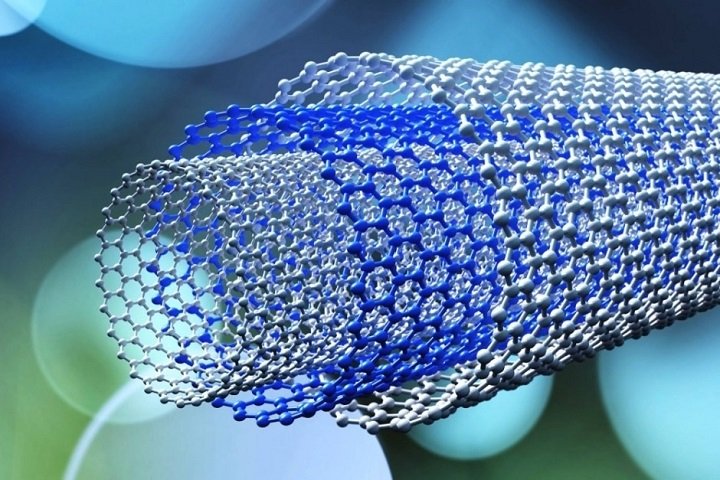Nanotechnology Carbon has transformed many aspects of science and technology, enabling innovations that were once thought impossible. One of the most exciting applications of this field is the use of carbon in nanotechnology. But what does that mean, and why is it so important? This blog post will explore what nanotechnology is, why carbon is a key player, and how these two areas are combining to reshape industries like medicine, electronics, and energy.
Nanotechnology works at the smallest scale—think of atoms and molecules. It allows scientists to manipulate materials at the “nanoscale” (about 1 to 100 nanometers wide). To give you some context, a human hair is about 80,000-100,000 nanometers thick. That’s how small we’re talking! Carbon, a naturally abundant element, is incredibly versatile and shows amazing properties when used at the nanoscale. From the strong yet flexible graphene to the tiny carbon nanotubes, carbon is revolutionizing industries when combined with nanotechnology.
In this post, we’ll dive deep into this fascinating world, understand how nanotechnology and carbon interact, and what the future holds.
What is Nanotechnology?

Let’s break down why this is such a big deal. At the nanoscale, materials can behave differently because of something called the surface area to volume ratio. When you shrink something down to the nanoscale, you’re increasing its surface area relative to its volume. This gives it more “room” to interact with other materials, which can lead to stronger, lighter, or more reactive materials. And that’s where carbon comes in.
The Role of Carbon in Nanotechnology
Carbon is one of the most abundant and versatile elements on Earth. You’ve probably heard of carbon in forms like graphite (used in pencils) or diamonds, but at the nanoscale, carbon becomes even more fascinating. Two of the most exciting carbon nanomaterials are graphene and carbon nanotubes.
1. Graphene: The Super material
Graphene is a single layer of carbon atoms arranged in a hexagonal lattice. Even though it’s only one atom thick, it’s one of the strongest materials known to man—about 200 times stronger than steel! On top of that, it’s also incredibly lightweight and an excellent conductor of electricity and heat. These properties make graphene perfect for applications like:
- Flexible Electronics: Imagine foldable smartphones or wearable gadgets that are thin, flexible, and lightweight, all made possible by graphene.
- Energy Storage: Graphene is being used to create better batteries, which could charge faster and hold more energy. This could revolutionize everything from smartphones to electric cars.
- Medical Applications: Because of its strength and thinness, graphene could be used in medical sensors and drug delivery systems.
2. Carbon Nanotubes: The Tiny Cylinders of Strength
Carbon nanotubes (CNTs) are another form of carbon at the nanoscale. These tiny cylinders of carbon atoms are incredibly strong—stronger than steel—yet much lighter. They also conduct electricity and heat very efficiently.
Carbon nanotubes are already being used in:
- Electronics: Their ability to conduct electricity makes them valuable in creating smaller, faster, and more efficient electronics.
- Aerospace: Because of their strength and light weight, CNTs are being incorporated into materials used in airplanes and spacecraft.
- Medical Devices: Similar to graphene, CNTs are being explored for use in advanced medical applications, such as drug delivery systems and even artificial muscles.
Real-World Applications: How Nanotechnology and Carbon are Changing Industries
Now that we know what nanotechnology is and why carbon is so important, let’s look at some specific examples of how these innovations are being used today.
1. Medicine
One of the most exciting applications of nanotechnology and carbon is in medicine. Scientists are developing new ways to deliver drugs directly to cancer cells using nanoparticles, which could reduce the side effects of treatments like chemotherapy. Graphene-based sensors are also being used to detect diseases at an early stage, potentially saving lives by allowing for earlier and more accurate diagnoses.
2. Electronics
As electronics get smaller and more powerful, traditional materials like silicon are reaching their limits. Enter carbon nanomaterials. Carbon nanotubes and graphene are being used to create transistors, the building blocks of electronics, that are faster and more efficient than ever before. This could lead to faster computers, better smartphones, and even more advanced wearable tech like smartwatches and augmented reality devices.
For more detailed insights on how carbon nanomaterials are changing electronics, you can explore this informative article from the Institute of Electrical and Electronics Engineers (IEEE)
3. Energy
The future of energy storage may also lie in carbon nanotechnology. Graphene-based batteries could replace the lithium-ion batteries we currently use, leading to faster charging times and longer battery life. Solar panels could also benefit from graphene’s excellent conductivity, allowing them to absorb more sunlight and generate more power.
The Future of Nanotechnology and Carbon
The future of nanotechnology and carbon is incredibly bright. Researchers are only scratching the surface of what these materials can do, and as technology advances, we’ll see even more innovative applications.
Some of the future possibilities include:
- Artificial Photosynthesis: Scientists are working on ways to use nanotechnology and carbon-based materials to mimic photosynthesis, the process plants use to turn sunlight into energy. This could lead to new ways to produce clean, renewable energy.
- Environmental Cleanup: Nanotechnology could be used to clean up pollution. For example, carbon nanotubes could be used to filter water or clean up oil spills more efficiently than current methods.
- Advanced Robotics: Carbon nanomaterials could be used to create stronger, lighter, and more efficient robots. This could have applications in everything from manufacturing to space exploration.
Conclusion
Nanotechnology and carbon are two areas of science that are rapidly changing the world as we know it. From medical breakthroughs to more powerful electronics and clean energy, the possibilities seem endless. By harnessing the unique properties of carbon at the nanoscale, researchers and engineers are unlocking new technologies that will shape the future.
As we continue to explore the potential of nanotechnology and carbon, the world will see advancements that will improve not only industries but also everyday life. The future is exciting, and nanotechnology is leading the way.
For a deeper dive into how nanotechnology is shaping the future of medicine, you can read more at the National Institutes of Health’s Nanotechnology portal
Incorporating nanotechnology with carbon is just one piece of the puzzle, but it is a critical one. The more we learn, the more we’ll be able to innovate and create technologies that can change our world for the better. Stay tuned—because the future of nanotechnology and carbon is just beginning.





